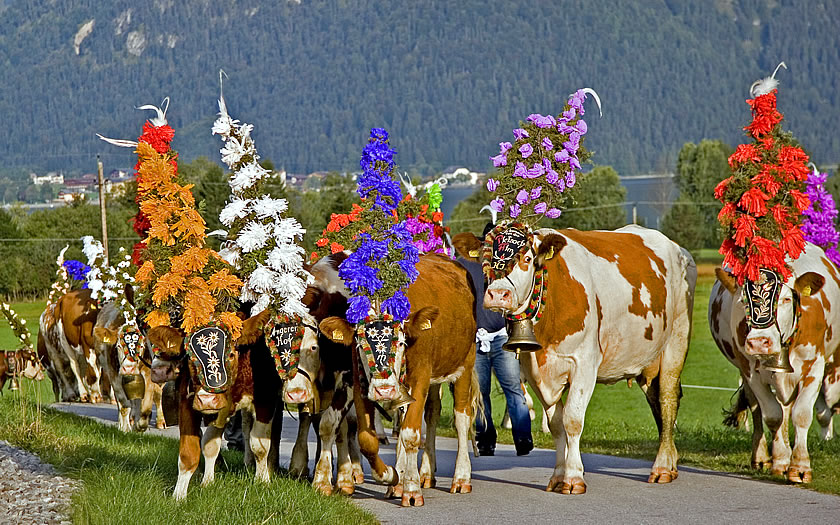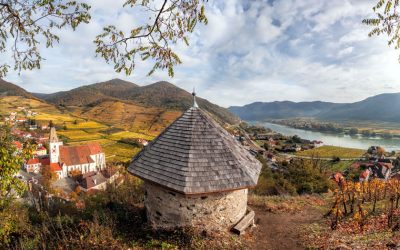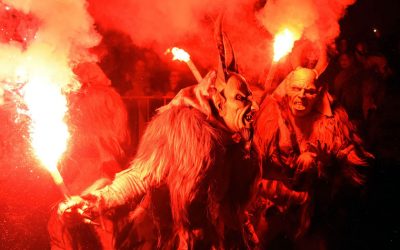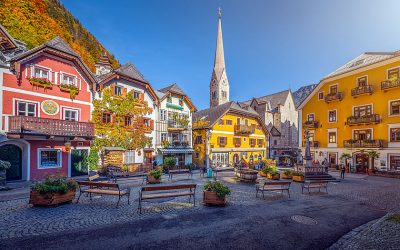Last updated on April 8th, 2020 at 06:49 am
The Almabtrieb is a German word for the traditional festival when animals are brought down from mountain pastures at the end of the summer. It is one of the major village celebrations in mountain farming regions and has grown into an important event on the tourist calendar.
What does ‘Almabtrieb’ mean?
An ‘alm’ in German originally means a high mountain pasture where animals can graze in the summer time. It comes from the same origins as ‘alpe’, which is sometimes used in the west of Austria and Switzerland and which is where the name Alps orginates.
‘Treiben’ means to drive or to herd when used in relation to animals and ‘ab’ is used to denote ‘away from’ something.
Thus an ‘Almabtrieb’ is the driving of animals away from their mountain pastures.
Why are the cows coming down from the mountains anyway?
Well, it’s not just cows, but sheep, horses and goats that have spent the summer on the high pastures. In technical terms, this is called ‘vertical transhumance’ – in other words, when people and their livelihoods move between different locations and altitudes from season to season.
Why bring the animals up into the mountains in the first place? There are a number of reason why this tradition started.
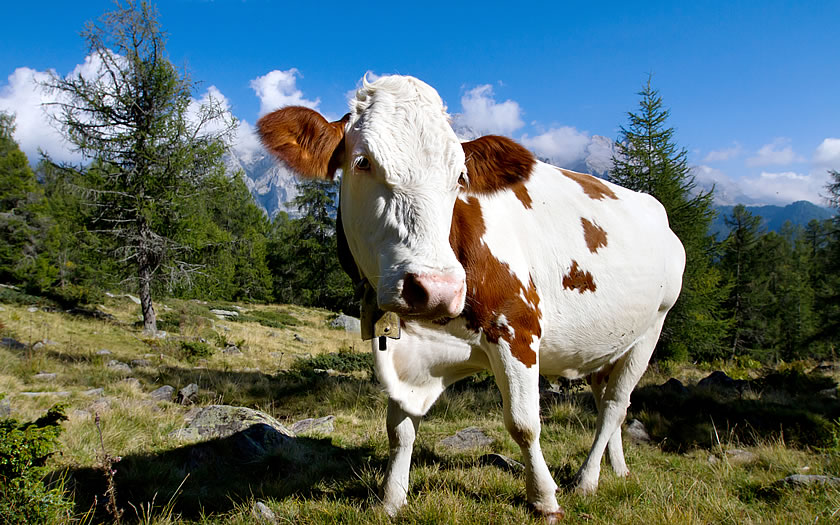
Firstly, in many alpine valleys, flat convenient farming space was at a premium and moving livestock out onto higher pastures meant that a smaller number of people could look after them elsewhere, with the valuable lower land being used for arable farming, for living space or for other uses.
Alpine inhabitants were using high meadows as pastures back in the Neolithic era. Pollen analysis at the University of Innsbruck has shown that alpine pastures in the Upper Ötz valley were being grazed more than 6000 years ago. Remains of alpine animals from the Late Bronze Age (1250-750 BC) have been found on the Kelch-Alm near Kitzbühel, whereby alpine farming probably supplied the copper miners.
In the days of the Celts and Romans it was above all the grass zones at the end of the valley that were used by the local cattle farmers. The pre-Roman and Romanesque names of many alpine pastures given at that time have survived in some places to this day.
From 1000 AD onwards, the growing population finally cleared pastures in the mountains, especially between 1000 and 1500 metres above sea level. These bear names derived from German.
Secondly, moving animals up into the mountains put them out of harm’s way in the turbulent times of the Middle Ages when marauding troops travelling through an area might demand stock to feed the soldiers in return for a promissory note.
Almabtrieb customs and festivals
Each Germanic mountain region has its own way of celebrating the Almabtrieb, with different methods of decorating the animals that are returning from the mountains.
The first reports of decorated cows in the Tyrol, for example, date back to the middle of the 18th century. In 1812, the Tyrolean painter Jakob Placidus Altmutter captured a cattle drive in a tinted pen drawing, which is now in the possession of the Landesmuseum Ferdinandeum.
For a long time experts believed that decorating livestock was a kind of protective spell against evil spirits. This theory has been discredited by the fact that only selected animals were “bushed” or “wreathed” up. If there had been losses due to illness, falling rocks or thunderstorms during the alpine summer, they were even driven home completely unadorned. And at the most difficult places of the ways, where protection would be particularly necessary, the heavy decoration was removed from the animals.
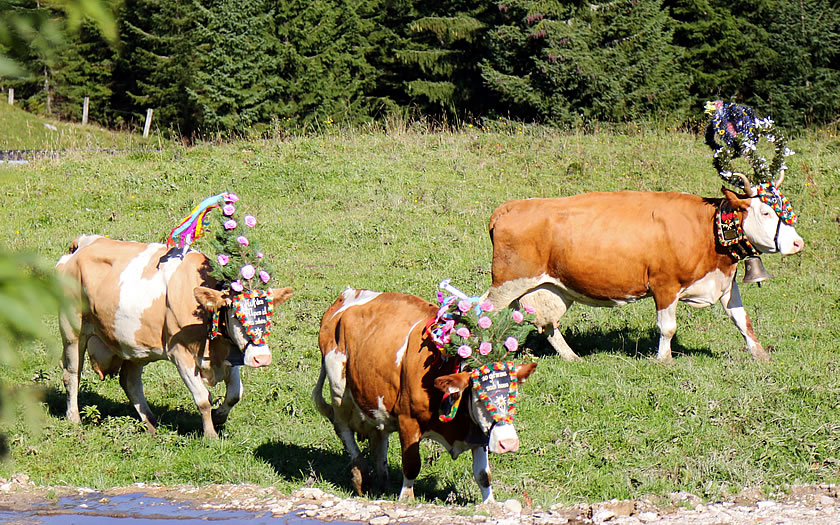
Today, for example, the drive down from the mountain pastures is once again regarded as an integral part of the end of summer celebrations, whose colourful playfulness originates more from the baroque fashions of the 17th and 18th centuries.
In parts of the Tyrol such as the Kitzbüheler Alps and the Zillertal, the animals carry natural pine or spruce branches decorated with colourful ribbons between their horns.
The area west of Innsbruck is dominated by wooden flower arrangements with representations of figures. Masks decorated with mirrors, pictures and sayings are widespread especially around Imst and Landeck. In the Ausserfern, Wipptal or East Tyrol, wreaths made of fir, alpine and artificial flowers and horn are popular.
The alm is where the yodel was born and where ancient legends and stories were set. Folk songs used to sing about summer life up in the mountains.
Certain saints – Barbara, Leonhard, Antonius and above all Wendelin – were called upon for protection and blessing and chapels were built on some alpine pastures in their honour. Saints served as a calendar orientation, as was customary in everyday farming life. Depending on the altitude, the cattle were brought up to the mountain pasture to St. Boniface (05 June), St. Vitus (19 June), St. John (24 June) or St. Kilian (08 July).
But the most important event in life ‘on the alm’ is the Almabtrieb. Traditionally, the trip home is between St. Bartholomäus (24 August) and St. Michael (29 September), depending on whether there is still enough grass and water to be found on the meadows and there is no early snow forecast.
Where to find an Almabtrieb festival
All of the mountainous regions in Austria – the Vorarlberg, the Tyrol, Salzburg, Carinthia and Styria – have locations where Almabtrieb festivals are celebrated and certain dates are pencilled in for those festivals to take place.
However weather can force animals down from the mountains earlier than predicted, so it is wise to check with the local tourist office to see if and when any festivals nearby might be taking place. Generally speaking, the higher mountain villages tend to hold their Almabtrieb festivals from mid- to late-September, with some of the lower ones or for particular types of animal (sheep or horses, especially) taking place as grazing and animal conditions demand.

